“New art awakens our resistance insofar as it proposes changes and inversions, some new order, liberates what has been repressed, lets in too early whiffs of an unwelcome future.â€
— Ted Hughes, “The Hanged Man and the Dragonflyâ€
“I often see pundits on television unable to distinguish the difference between the arts and the lower forms of culture or pornography. For me, the greatest difference is that while both may at times take a look at the more negative aspects of human experience, the higher art forms always evoke the appropriate emotional response. When you see someone hurt, you feel empathy for that person; and in pornography or some lower forms of culture, often the opposite response is elicited.†(emphasis added)
— Deborah Moran, violinist, Houston Symphony, letter to the editor of the Houston Chronicle on John Carey’s book What Good Are the Arts, March 22, 2006
“Does it ever get any easier?†– Ichiro Suzuki, currently greatest hitter in Major League baseball, to his hitting coach, whose response was, “No.†March 20, 2006
The first two quotes above, to which I’ll return at the bottom of this paper, are meant to suggest different conceptions (and/or misconceptions) about the purpose of art, while the last one has to do with the practice of art, especially on a daily basis, which is really the only relationship one has to one’s art that matters in the end. Suzuki, or “Ichiro,†as he is known, is famous for his strict preparation and discipline, which extends to a curious stretching routine that he undergoes prior to every game, and includes a very intense and precise foot massage that he gives himself to stimulate and awaken muscles throughout his body. He is a great hitter who holds the single-season record for base hits, a record that stood in the Major Leagues for some 50 years. Yet his practice boils down to the incredible difficulty of trying to hit a round ball with a cylindrical bat.
Last season was considered an “off year†for Ichiro as he only batted .307. Most major league batters would kill for a season like that; the league average (I’m guessing here) is probably more like .270. That means most major league hitters put the ball safely in fair play less than 30% of the time. A good year for Ichiro means .350+, and he often flirts with the mythical .400 average, not achieved over a full season since the 1950s. Yet – as stated above – each time he comes to the plate none of that matters. The pitcher is still trying to get him out. He’s throwing a curveball, a splitter, a 95-mph fastball, inside, outside, and Ichiro has to focus on the one moment of the ball coming towards him, putting his bat on the ball and slapping it in fair play, then reaching base before the throw comes. This is not to say that he has to reinvent the wheel – his swing – every time at bat. His success is fed by his intense preparation and experience and repitition of practice. But, “it doesn’t get any easier.†He can’t just throw his stats at the pitcher and take his base. He still has the hard fact of that ball coming at him and he has to react, there, in the moment, as devoid (one might argue) in that moment of any previous conceptions as he can possibly be. But this (one imagines) is part of the practice, too.
Now take the poet. He or she encounters a moment of speech, or an image, or an emotion enacted in the flow of life. It inspires in him or her some sort of emotional response, the urge to “get it down†in such a way that others might feel something of that moment captured in words. The most natural thing in the world to do is to reach out as for a lifeline for the safety of description. What was it like? The woman’s hair was red like ____; her laughter was dry leaves, her legs the branching of trees, etc. This is what language seems to want to do, to constantly put things in terms of something else, so that others, experiencing that language, will recognize and share in the initial experience described. Yet in practice one is quite often “stumped†– one pauses to strain for the perfect likeness, to try on different metaphorical “figures,†and meanwhile the moment that sparked the poetic urge slips by like a baseball, safely into the catcher’s mitt. Strike three.
Thus one adopts different strategies. This is where it gets difficult, dangerous, exciting. The attention has to be almost super-sensory, the obsession approaching fanaticism in one’s daily practice. You can’t spring up from a stupor on the couch and hit a 98-mph fastball with a nasty spin on it. Just last night, for example, having made a good joke as a graceful exit from the group with whom one sat at the bar, one rose to leave. Yet then ran into another person at the next table to whom it was necessary to say goodbye, and, fumbling this awkwardly, quickly walked out. Immediately on the way home one was struck with a mysterious profundity to this moment. Yet it did not seem nearly enough to try to describe it. One wanted to get down the actual awkwardness preceeded by the exuberance and the whole hesitant flow of the thing. This seemed to involve working back through it, or back-wards, as what one immediately remembered was not even the initial exuberance at all but only the familiar social awkwardness that wildly altered one’s consciousness on an almost chemical level, like something out of Kafka. The mere “it was like thisâ€-ness of metaphor seemed horribly inadequate, both blowing up and out the pinpoint smallness of the moment.
This morning, leaving the gym, one saw two old women walking through the parking lot to their cars. In the distance on the traintracks a passenger train sped by, whistle blowing, and one of the women raised her hand and waved stiffly but eagerly, the other glancing at her curiously. Then one of the women said, “It’s so cold,†and the other replied, “It’s snowing in Iowa City.â€
There is so much to this moment, and so little. One thinks of Andy Goldsworthy, working diligently all day to weave together the delicate stems of fallen leaves into an intricate web, only to have the slightest breeze come along and blow it down literally in his arms. All one can do is keep the senses sharp and hone the craft for when the moment comes. One has to see the ball before one can hit it. But the ball doesn’t come tailor-made to fit one’s swing. So the endless minute adjustments, the emptying out of what one knows or has done before to meet the specific demands of whatever happens, yet hoping that prior experience and practice in some way helps.
Thus, perhaps, to the purpose of art. This is difficult. The best of it is as strangely ephemeral, yet enduring, as those moments described above. One supposes that it must be as problematic and disturbing as the artistic/poetic moment itself, as difficult to grasp and digest, so that it sticks in the skin of the one experiencing it in a similar way. But to set out with the idea of making it profound, by the stacking up of metaphors, the skewering of language, or any other artificial means, is to defeat that purpose in advance. It would be akin to the old woman being conscious of having an audience as she waved at the passing train and said what she said, or the person taking leave of the bar performing a sort of pantomime awkwardness instead of the genuine thing, a freak, in other words, a Frankenstein. Yet the artist is performing. But he or she must do so in a special way. To go back to baseball terms, it would be Ichiro attempting to watch himself hitting the ball, to impress with the aesthetic beauty of his swing rather than just doing it. He might very well have a very beautiful swing then but he would not hit the ball. (And would it not be horrible, on the other hand, if Ichiro became so perfect that his average approached the perfection of 1000? At what point does it become more fascinating to watch the botched swings of the perfectionist than the occasional home run of the lazy, undisciplined hitter?)
But I see that I’m getting back into practice rather than purpose. In a way that’s because they’re so bound up together in my mind. Joanne Kyger has said that she’s only interested in poetry that tells her “what happened.†And she has a very “daily news†sort of feel to her poetry, yet it somehow does much more, cumulatively, than that. Perhaps that “cumulatively†is the key. You don’t swing the bat once and get 267 hits, yet over the course of a season, they accumulate, and you’ve got the new record. That’s why it seems facile almost to the point of being disturbing to hear a violinist, a trained and certainly highly skilled working artist, assert that the purpose of art is to “evoke the appropriate emotional response.†I don’t doubt that this is true, but perhaps not in the way that she meant it. She seems to have meant, given the context, that there is a level of appropriateness that we can all agree on, and furthermore that it lies in the realm of “empathy.†Yet the appropriate response, given the particularity of whatever the thing encountered and rendered by the artist, might as often be a sense of having been provoked, disturbed, disrupted, or otherwise made uneasy.
And it might, as Hughes suggests, be to propose a whole new order that the world consciousness senses but is not yet ready for. The Romantic poets, and more recently their literary heirs, the Beats, seemed collectively to believe in the transformative power of words, the power of words to affect and alter reality itself in a shamanistic, prophetic way. This is to believe in a sort of word-magic that goes beyond empathy/metaphor to create new worlds, to not merely see into the mirror but (as Borges suggests) to begin to populate it with strange new creatures intuited in some beyond that lies beneath the surface of this world or springs from it.


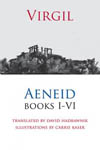
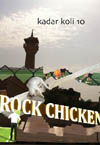
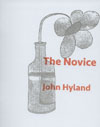


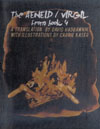
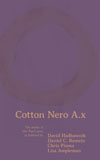

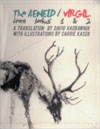
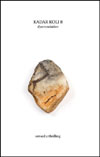
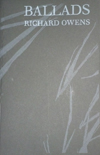
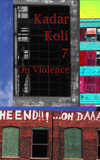
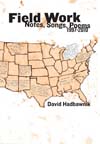
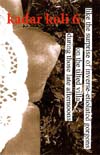
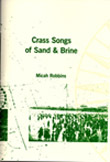

I think the last .400 hitter was Ted Williams at .406 in 1946. Same year as Dimaggio’s hitting streak I think?
Basho said that if he could write 1 good haiku out of 100, he would feel successful. And that’s a supposed haiku master!
great scott, you’re right! i stand corrected. yes, it was the same year as dimaggio’s streak — but it was 1941, actually.
as for basho, that’s probably the poetic equivalent of batting .400. depressing.
one more thought, actually: part of the problem as a poet is you don’t necessarily know whether you’ve hit a double or popped out to the catcher.
sometimes it takes years for that thing to drop into fair territory.
wow, 1941. I’m sure someone will do it again, but it’s amazing that the Ruth/Maris record and Gehrig’s record both fell before someone hit .400. George Brett hit .390 in 1980? And it seems like Tony Gwynn hit in the 390’s once. Ichiro could do it if he walked more often. But other than that, I can’t think of anyone currently playing who would have a decent shot. There seems to be a lull in “pure” hitters as of late. Of course, Albert Pujols is probably the purest hitter in the game, as far as his plate discipline and the lack of “holes” in his swing, but his problem as far as hitting .400 is his power, which doesn’t encourage him to shorten his stroke or hit those soft liners to right field as often as an Ichiro type would. Also, Pujols doesn’t beat out many infield singles.
Yes, all metahpors eventually breakdown, and in poetry, the ball that is most foul has a better chance of slice back fair several years later. (Consider Leaves of Grass being burned, literally, by Longfellow…I think that’s the right story…in any event, it was deemed pornographic). So, I guess the advice is not to swing for the fences, but for the seats in foul territory where no one is sitting.
Wow! Imagine my surprise to find myself quoted in my meanderings around the web. Of course I mean any number of emotions including being disturbed, provoked, or made uneasy. But what I don’t mean is finding enjoyment in another’s undeserved misfortune.
Wow — wacky indeed. Thanks for dropping in and elaborating on the quote. Probably unfair of me to use it without context, and I do think there’s a useful distinction to be made between “art” however defined and what I would consider to be exploitation for profit. I never meant to question that distinction — although of course the problem is that so much art HAS been considered pornography and so many “low forms of culture” have been dismissed without any consideration of artistic value.
The former (art being equated to pornography) is especially prevalent in literature, while the latter seems to me a basic condition of music — folk music, etc., being a root source.
But what makes me uncomfortable, still, is the word “appropriate.” I don’t know how it could be defined in a satisfactory way. Is the appropriate response the one that falls most closely in line with the artist’s intention? Or is it the one the most people agree on? In searching the web for a Soviet composer (who turned out to be Shostakovich), I came across this quote from Stravinsky: “music is, by its very nature, essentially powerless to express anything at all.” Stravinsky, who wrote Le sacre du printemps, understood something about unintended responses. Meanwhile, isn’t there still a controversy over whether some of Shostakovich’s music was intended as straight Soviet propaganda or scathingly ironic dissidence? Again, I don’t know how you define appropriate in that situation.